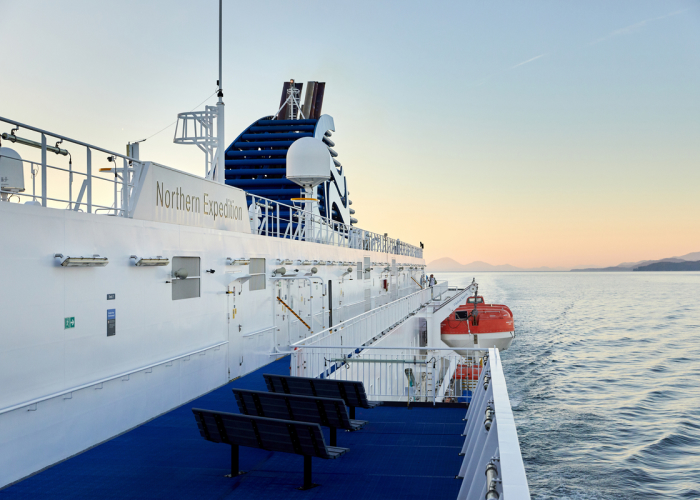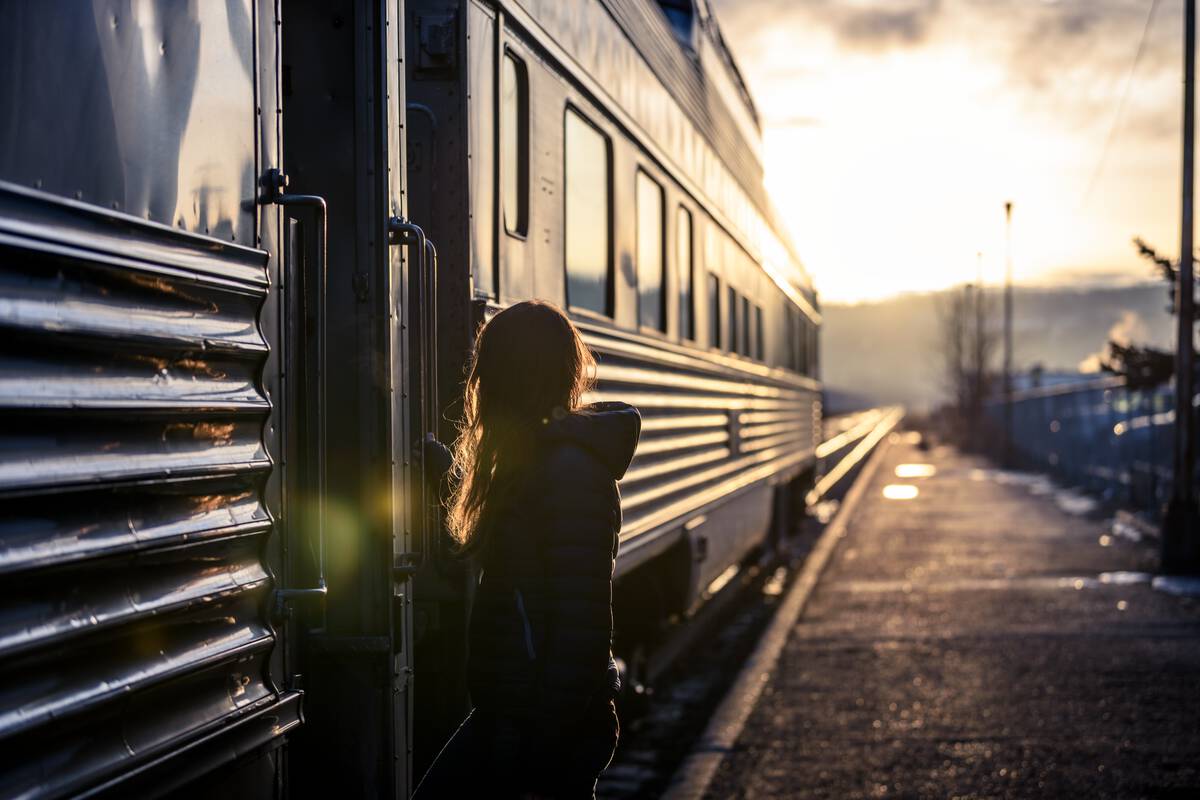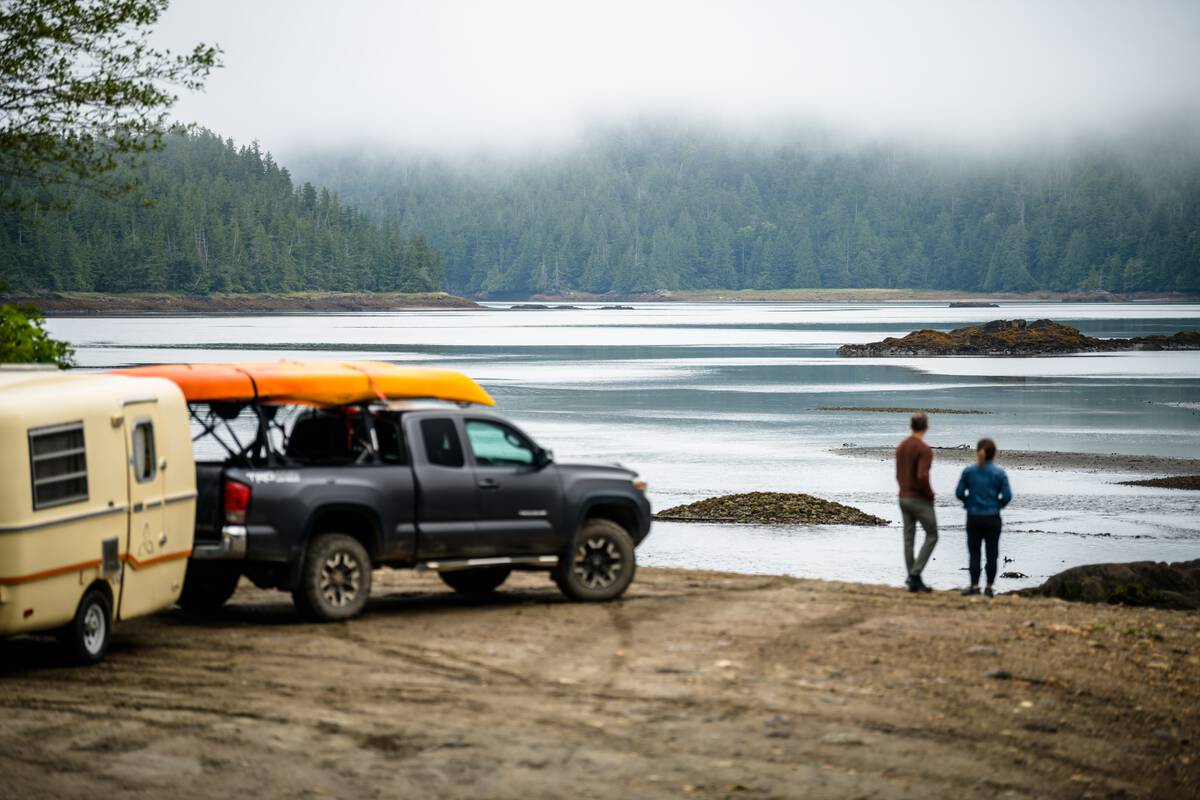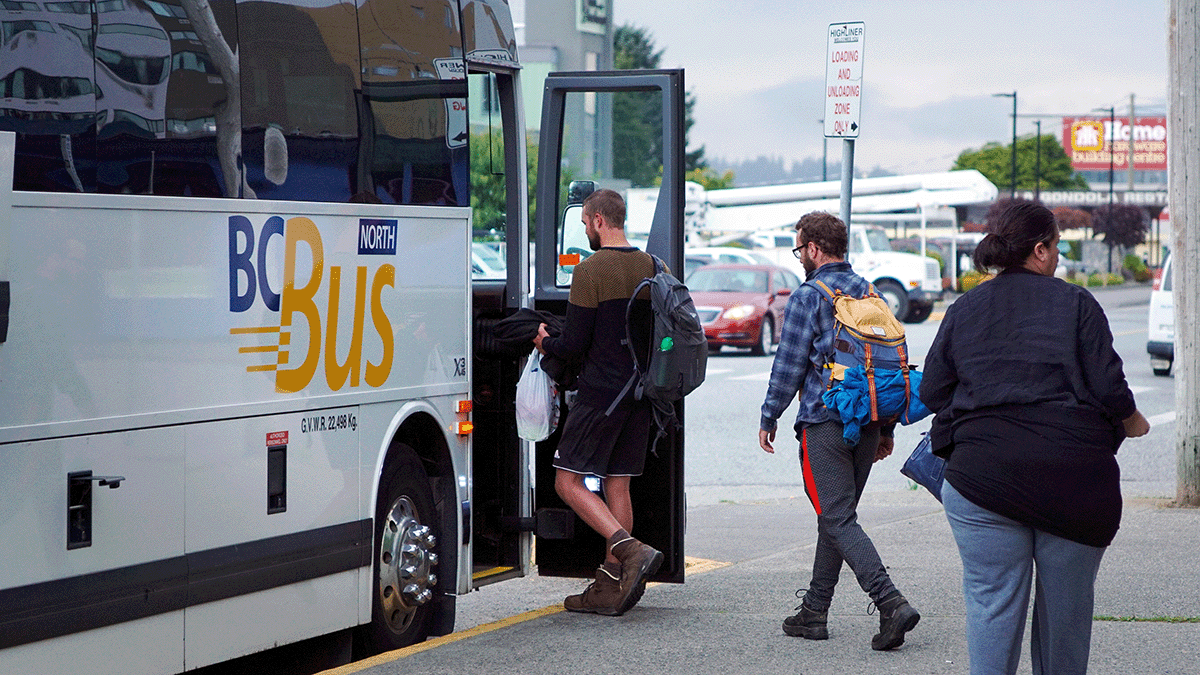Where we are
Prince Rupert is a transportation gateway in Northern BC, perfectly positioned to be accessible by road, air, rail, and sea.
Be Prepared
Prince Rupert is a remote community situated on the North Coast of British Columbia. Access is often difficult and cell phone reception can be spotty, so it’s important to be prepared when going out for an adventure.
Plan for adverse weather
Check the weather before you head out for any kind of adventure. It rains a lot in Prince Rupert, so good quality raingear is a must! We’re talking waterproof shoes, rain pants, raincoat, and a hat – the works.
Plan your route
Make sure to plan out where you’re going in advance and have an alternate route sketched out in case you run into issues. Read up on the route’s difficulty and any challenges you should anticipate.
Communicate your plan
Tell someone where you’re going and have a way to contact them in case you run into trouble.
Make sure you have some form of navigational/communication aid, such as a map, compass, GPS, cellular or satellite phone, or handheld radio.
Pack the right gear
In addition to quality rain gear, packing the right gear will be crucial if you run into issues in the wilderness. You could need things like:
- Flashlight and spare batteries
- Firemaking kit with waterproof matches or lighter and firestarter or candle
- Signalling device, such as a whistle or mirror to signal searchers if you get lost
- Extra food and water
- Extra clothing (rain, wind, water protection).
- Pocket knife
- Sun protection such as glasses, sunscreen and hats
For more tips on preparing for outdoor adventures, visit https://www.adventuresmart.ca/
FAQS
Some frequently asked questions about our coastal community!
What is the weather like in Prince Rupert?
As a temperate rainforest, Prince Rupert enjoys a mild coastal climate. Summer temperatures can see a an average high of 18 degrees celsius and a low of 9 degrees celsius. Rainfall in Prince Rupert is approximately 250cm/100 inches annually
What clothing should I bring?
Unless you are coming from an extremely warm, dry climate, most days you should be comfortable in slacks, a short sleeved shirt, and a light sweater. During the evening you will likely prefer a warm sweater or fleece. Because the weather can change quickly and rain is common in Prince Rupert, dress in layers and carry breathable-water resistant clothing. If you are planning a water or wilderness excursion, contact the operator for further instructions.
Should I book ahead?
Yes! Tours, hotels, and activities in Prince Rupert book up very quickly for the summer season so it’s important to book ahead. In particular, if you are looking to accquire a Ferry or Train ticket on your journey it is important to book in advance to secure a ticket.
Where is the airport located?
The airport is located on Digby Island, and is only accessible by ferry. Bus and ferry transportation is provided for all airline travellers. For those arriving by private plane or those meeting a seaplane, ground transport is available from the terminal to the Digby Island dock. Visit www.ypr.ca for more information.
How far is it to Vancouver?
It is 770 kilometers / 478 miles. Driving distance is 1502 kilometers / 933 miiles.
Where can I get information on road conditions?
Visit www.DriveBC.ca for up to date road conditions and events, a.s well as highway cameras, or call 1-800-550-4997
Is there a provincial campground?
Yes, Prudhomme Lake Provincial Park operates a small, forested lakefront campground only a short distance east of Prince Rupert. Nearby Diana Lake Provincial Park provides opportunities for a variety of day-use activities. Campsite reservations are accepted and first-come, first-served sites are also available. Please note reservations must be made 2 days in advance of your stay. that Visit https://bcparks.ca/explore/parkpgs/prudhomme/ for more information.
Where can I find information on sports fishing regulations?
For information on B.C. tidal waters and freshwater salmon fishing visit www.pac.dfo-mpo.gc.ca/recfish
Or call:
Saltwater Fishing
Prince Rupert office: (250) 627-3499
Freshwater Fishing
Prince Rupert Office: (2501) 627·3409
How do I get to Port Edward?
Port Edward is a small seaside community approximately 15 kilometers from Prince Rupert. If driving, take Highway 16 from Prince Rupert and follow highway signs until you reach the Kaien Island Bridge, then turn right at the Port Edward turn off and it will take you into town.
How do I get to the North Pacific Cannery?
The cannery is approximately 7 kilometers from Port Edward. If driving, follow Highway 16 out of Prince Rupert. Watch for the Highway signs indicating how to get to Port Edward. After the Kaien Island Bridge, take a right hand turn at the Port Edward turn off. Continue through Port Edward along the main road for 10 minutes until you reach the North Pacific Cannery.
Where can I purchase a fishing license?
The Prince Rupert Visitor Centre now located at the Port Interpretive Centre at 100-215 Cowbay Road, can provide an updated list of locations where licenses are available for purchase.
Where can I rent a car?
Prince Rupert has two car rental agencies: Enterprise and National. Both are located at 815 1st Ave W #106, Prince Rupert, BC V8J 1B8, near the airport shuttle station.
WHAT ARE SOME OTHER FORMS OF TRANSPORTATION?
Once you get to Prince Rupert, you have many options for moving around town. There’s public transit—city buses that regularly run around town. Additionally, you can rent a car (a good idea if you want to explore a bit further afield, say down the Skeena River). There are also plenty of taxis that operate in Prince Rupert. For much of the shopping and dining, you can easily just head out on your own two feet.
HOW DO I GET TO PRINCE RUPERT?
Prince Rupert is a transportation gateway in Northern BC, perfectly positioned to be accessible by road, air, rail, and sea.
HOW CAN I GET ON THE WATER?
With some advance planning, a wild adventure is not far out of reach. Kayaking, Paddling and Boating here does require safety precautions—this is a rugged landscape and the Rupert weather is known for rapid changes. Make sure you have a good map, appropriate clothing, and safety equipment before you head out. For more information check out https://visitprincerupert.com/outdoor-adventure/
WHAT IS THERE TO DO IN PRINCE RUPERT?
Opportunities for adventure in the North are boundless – if you know where to look. Fill your days by exploring the wilderness on one of our many trails, taking a wildlife viewing excursion, fishing, or wandering through a museum or art gallery.



